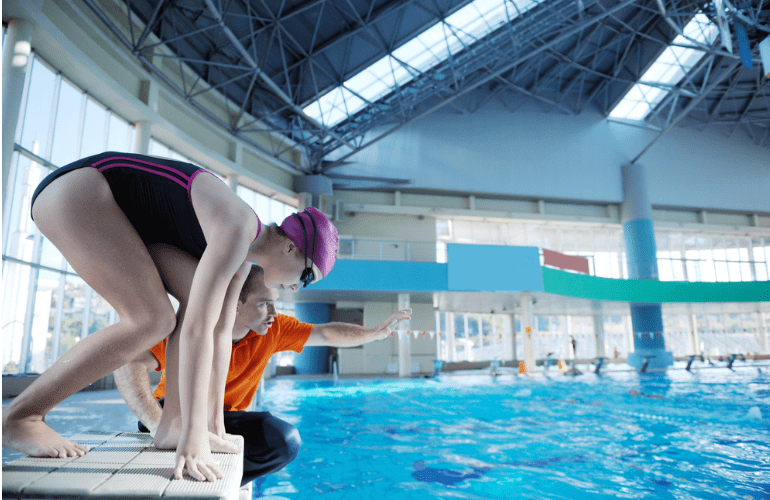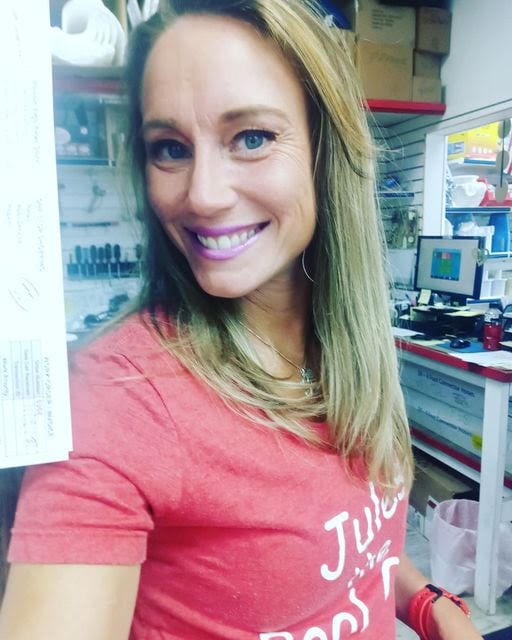
There are many fields we need to test for to ensure clean, and most importantly, safe swimming pool water. We need to check for sanitizer, pH, alkalinity, cyanuric acid, calcium hardness, total dissolved solids, metals, and salt, if applicable. All of these factors tie together in what is known as the Langelier Saturation Index. While each individual field is important, the overall condition of the water is something we pool operators need to be aware of. With the Langelier Saturation Index (LSI) we can determine if our swimming pool water is neutral, scale-forming or corrosive. We can then adjust any needed fields to correct that. Did you know that the Pool Shark H2O App utilizes the Langelier Saturation Index when providing dosing instructions for your particular body of water? How cool is that?
Alkalinity
Alkalinity is an important field in our swimming pool tests. It acts like a buffer against changes in our pH. Think of it as a safety on your swimming pool’s football team. By keeping our alkalinity in range, we are more likely to have a stable, in-range pH.
If you find that your alkalinity is too high a couple of things could happen. For one, your sanitizer won’t be as effective. We don’t want ineffective sanitizer because this could lead to water-borne illnesses. Isn’t that the main concern of every pool operator? Safety? If it is not, it should be!
High alkalinity can also cause the water to become basic. This scale-forming solution can lead to unwanted calcium buildup around our water line, inside our plumbing, and even our equipment.
You also may experience cloudy water with unbalanced alkalinity. This is not only unsightly but a potential drowning risk. Remember, the law states that we have to have visible main drains at all times. Safety first!
Finally, high alkalinity can be irritating to its bathers. You may get complaints of skin and eye irritation. We want our clients to be safe and ENJOY their swimming experience. Am I right or am I right?
Lowering Alkalinity in Pools
The way a pool operator can lower their alkalinity is by adding muriatic acid to the swimming pool. Some pool pros prefer dry acid (Sodium Bisulfate). Both will achieve the same result. Alkalinity and pH are on a buddy system. They go up and down together. Once in a while, one will drop or rise out of range. We need to always tackle the alkalinity first, then adjust the pH. This may seem silly, but hey, science is science.
Some people will tell you that pouring an acid “slug” into one spot of your swimming pool will lower just the alkalinity. This is a wive’s tale, my pool friends. One cannot lower alkalinity without also affecting the pH. There is one exception. Injecting CO2 into the water is the ONLY way to affect pH alone. A cool way to raise just pH is to aerate your swimming pool water.
Raising Swimming Pool Alkalinity
We can raise alkalinity in our swimming pools by adding alkalinity up (Sodium Bicarbonate). This will raise the alkalinity and in turn, the pH mildly. If you are looking to raise BOTH your alkalinity and pH then you would use soda ash (sodium carbonate). If you do this and find your pH is now too high, don’t despair. We just need a little acid to get the pH and alkalinity back in their buddy system. It is somewhat of a game of cat and mouse.
Test, Test, Test!
A healthy pool is one that is tested often. Depending on your region this may be as often as every hour. This can be a cumbersome task IF you are still using old technology like a test kit and paper logs. Think about how much paperwork you have to store (per the law) if you are a pool operator who has to test often. Or any pool operator for that matter. I suggest investing in modern technology. Get the LaMotte Spin lab. With this lab, water is injected into a spin disc and when paired with the Pool Shark H2O App, the results are sent to your devices in just 60 seconds. Not ready to spring for the LaMotte Lab? You can still benefit from the Pool Shark H2O App. You can manually enter your results and get proper LSI dosing instructions. It also stores digital water test records. No more scrambling to find your clipboard if the health inspector should pop around. I highly recommend the modern technology and seamless transition to the Pool Shark H2O App to any pool professional. See you poolside!
More Commercial Pool Chemistry Resources
Free, vs Combined vs Total Chlorine - A Guide for Commercial or Public Pool Operators
Chlorine Shock vs Non-Chlorine Swimming Pool Shock
Why Being Able to Calculate the Volume of a Commercial or Public Swimming Pool is Important
Cyanuric Acid Levels in Swimming Pools
Managing pH and Alkalinity in Pools
Commercial Pool Chlorine Management
Cyanuric Acid in Your Pool Too High? How to Remove Cyanuric Acid (Lower Pool Stabilizer)
Lowering Alkalinity in Swimming Pools
Reasons Your Public or Commercial Pool Water Could Be Cloudy
Muriatic Acid in Swimming Pools
How to Lower pH in Pools, Water Parks and Water Features
Does Chlorine Kill Poop in a Swimming Pool?
Total Dissolved Solids: When Should I Drain My Pool?
Why Pool Chemical Storage Cabinets are Important for Commercial Pools
Storing Pool Chemicals: What Commercial Pool Operators Need to Know



